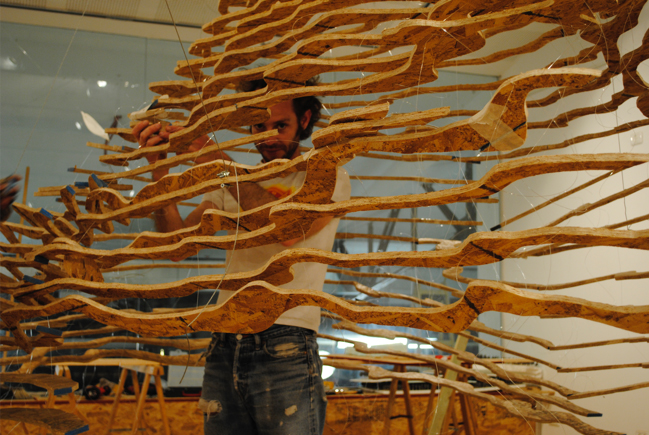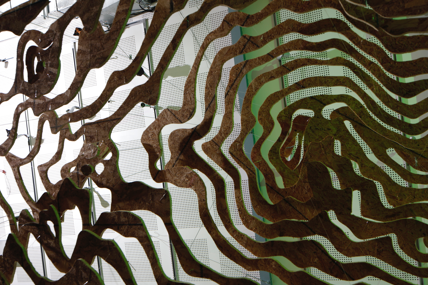TOPOGRAPHY OF SCALE
The exhibition transforms the gallery into an architectural model and an architectural space simultaneously. Using the materials that make the floor - OSB boards, an installation of wall to wall topographic model produces two scale situations, with the trees as reference points. The visitor is led through a trail not only in the physical realm, but also in the relative realm. The shift of scale between the visitor and the trees produces a sort of shrinking and enlarging machine. As the gallery is transformed from a place that exhibits objects into an object itself, so is the visitor transformed into an integral element of the exhibition.
What happens when the creation turns on the architect and the miniaturized reality becomes real?
When the architect gets sucked into the model and transforms into a plastic figurine -
A human for scale?
Reality
The perception of our physical dimensions in relation to the enveloping surrounds is essential for our sense of reality. A reflexive consciousness guides our way through
space, enabling us to move and conduct ourselves. Reality has a fixed scale and
doesn't change its dimensions instantaneously. The door we passed through would not shrink overnight, we would still be able to pass through it tomorrow.
Model
The function of the model is to simplify reality into a miniaturized version that can be assembled and placed on the work table. For the architect, the model is a small imaginary world. An architectural tool for exploration, formation and visualization in a virtual reality made of cardboard. In relation to the model, the human is a giant, an overshadowing omnipotent manipulator.
Twilight Topography
When contracting the reality into a hand held object, the perception of human scale in relation to the space that the model depicts becomes blurred into a vertigo of scale. We need a reference point, an element of familiar dimensions - a miniaturized version of ourselves through which we can pace in the world we have made. The absence of a reference point reveals an interstitial space between the unset reality of the model and the reality as we experience it - a Twilight topography that shifts scales in accordance with human relation.








